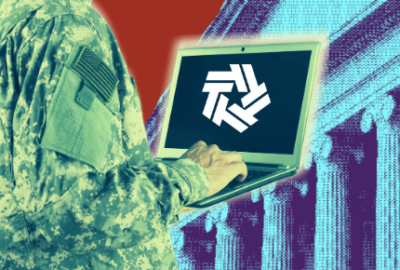

A new governmentwide pay model for federal IT and cybersecurity employees is coming into focus.
UPDATE: The rollout of a Special Salary Rate for federal cyber and IT positions is on hold, pending additional implementation guidance. The Defense Department says it will not implement the SSR, and other agencies have expressed uncertainty about its rollout. The Department of Veterans Affairs is prepared to implement the special rates, whether or not the SSR moves forward governmentwide.
A new governmentwide pay model for federal IT and cybersecurity employees is coming into focus, although the timing of its final release and the scope of agencies that adopt it remains unclear.
The Office of Personnel Management last month approved a Special Salary Rate (SSR) for federal employees working in 2210-classified IT and cybersecurity positions, but the agency still needs to finalize many of the details before its public release.
The Special Salary Rate for IT employees in the federal workforce, once implemented, would mark the first major governmentwide step to address long-standing staffing shortages in federal IT and cybersecurity positions.
The SSR isn’t intended to match what some of the biggest tech companies are able to pay their employees, but will at least close the gap for IT workers considering a career in government service.
Preliminary details of the long-awaited SSR show that entry-level and mid-career federal employees working in IT and cyber jobs will see the biggest increase in overall pay.
Senior IT employees at the upper levels of the GS pay scale would see a more modest pay increase, and in some cases, would not see any additional increase in pay, because of current salary caps that apply to all federal employees under the GS pay scale.
It’s up to agencies whether or not they opt into the SSR. However, the Department of Veterans Affairs and several other Cabinet-level agencies submitted the SSR proposal to OPM last fall.
That coalition of agencies includes the Cybersecurity and Infrastructure Security Agency, the Department of Health and Human Services, the State Department and the Energy Department.
A spokesperson for VA’s Office of Information and Technology told Federal News Network on Friday that once implemented, the SSR would allow the agency to “significantly raise the salaries” of more than 7,000 personnel nationwide.
If adopted by all agencies, VA expects the SSR will significantly increase the pay for about 100,000 federal employees governmentwide.
The VA OIT spokesperson said the SSR is meant to significantly close a significant portion of the current government-to-industry pay gap, make its pay offers to prospective offers more competitive, and the “prospect of public service too difficult to turn down.”
“The special rates will go a long way in swaying individuals who are on the fence about joining the government, or those who’ve wanted to join us in the past, but couldn’t afford to take such a significant pay cut to make the leap,” the VA OIT spokesperson said.
VA OIT said the special rates are meant to narrow the more than 60% average government-to-private sector pay gap.
“Thankfully, our ability to apply the special rates isn’t isolated to a single geographic location,” VA OIT said. “By expanding our market research into major metropolitan areas across the country, we were able to demonstrate the need for higher rates nationwide, at all career levels, and put forward recommendations for locality-specific supplements.”
Nathan Tierney, the VA’s deputy chief information officer and chief people officer, told staff in a recent memo obtained by Federal News Network that OPM notified agencies on Jan. 11 that governmentwide special rates are being established for federal technology and cybersecurity positions.
Tierney, in his Feb. 6 memo, said the current structure of the General Schedule pay scale is an “obstacle when competing with the private sector for new talent and retaining high-performing employees.”
“Particularly in critical occupational areas, such as technology and cybersecurity, salaries are too low to be competitive even when combined with compensation incentives and benefits,” Tierney wrote.
Tierney said the final rates determined by OPM will increase basic pay for all VA OIT personnel in covered technical positions, and will exceed the VA’s current cybersecurity retention incentives “in all but a few cases.”
As a result, Tierney said the VA will not renew its cybersecurity retention incentive, which is currently set to expire on May 7.
An OPM spokesperson said Thursday that the agency currently doesn’t yet have a timeline on when the SSR pay tables will be available.
Proposed 2210 SSR pay tables obtained by Federal News Network, however, show the SSR would result in a more than 20% increase in pay for many early and mid-career federal IT workers receiving locality pay for the Washington, D.C. metro area.
A GS-5, Step 1 employee receiving locality pay for the Washington, D.C. metro area, for example, would see their salary increase from $42,870 to $54,360 — a more than 26% increase.
A GS-15, Step 1 employee in the D.C. area, however, would go from a $155,700 salary to $161,000 annually — about a 3.4% increase.
The proposed SSR pay tables reviewed by Federal News Network calculate how much supplemental pay federal employees would receive compared to the 2023 GS base pay table, which doesn’t include locality pay. OPM also has 2023 locality pay tables available on its website
The SSR, however, doesn’t change the fact that federal employees’ pay is currently capped at $183,500 under level IV of the Executive Schedule.
OPM and nearly 50 other federal agencies also promoted the upcoming SSR at a recent governmentwide job fair focused on recruiting private-sector tech workers considering a change in careers after mass layoffs in the sector.
OPM said last month, following the Tech to Gov job fair, that the agency has been working with several agencies on the SSR, which “will make the federal government more competitive with the private sector for tech talent.”
The alternative pay proposal is just one of several lines of effort the Federal Cyber Workforce Management and Coordinating Working Group recommended as part of its report on the state of the federal cyber workforce last fall.
The working group, chaired by VA, the Defense Department and the Department of Homeland Security, reported in October 2022 that the 2210-specific SSR would “address the growing compensation gap between government and industry."
The working group, in its report, said the SSR would also increase the competitiveness of government job offers. The SSR, they added, would also “enable agencies to use retention incentives as they are intended — for highly skilled personnel who are likely to leave in absence of an incentive.”
DHS broke ground on new pay incentives for IT talent when it unveiled its cybersecurity talent management system in November 2021.
The project took seven years to complete, once Congress in 2014 gave DHS the authority to develop a cyber hiring, job classification and compensation framework separate from the federal government’s traditional practices.
In anticipation of OPM's final approval of the SSR, Tierney said VA OIT is developing internal implementation plans later this year.
"OIT is committed to increasing rates of pay for its technical workforce and is coordinating with OPM on final rates and the implementation timeline," he wrote.
Employees in covered positions at VA OIT will be notified prior to any change in rates. However, Tierney said the special rates are not guaranteed, and employees should not consider them when making personal financial decisions.
“Additional communications regarding occupational series, grade, and locality coverage, as well as a timeline, will be released once OPM issues final special rate tables,” he said.
While the VA has given some indication of its timeline to implement the upcoming SSR, it remains unclear when other agencies would opt into the special pay model.
OPM last October solicited agency requests for special pay rates that would, if approved, go into effect for certain federal positions in 2023.
The agency typically authorizes higher pay rates for specific occupations, grades and locations to help mitigate specific recruitment and retention challenges.
OPM maintains an extensive list of federal positions with special rates, which includes health care and engineer positions, as well as park rangers, law enforcement officers and firefighters.
Special pay rates are adjusted by either a set dollar value or a percentage of an employee’s base pay.
OPM also periodically reviews special rates to see if they should be terminated, reduced or increased, based on staffing considerations.
When making special pay rate recommendations, OPM advises agencies to consider alternative options, including the ability to provide other types of pay and leave flexibilities. Alternatives include relocation incentives and student loan repayments.
Most federal employees have seen their wages increase by more than 10% over the past two budget cycles, although a high rate of inflation has offset much of that pay increase.
President Joe Biden granted civilian federal employees a 4.1% base pay increase that went into effect Jan. 1 this year, plus an average locality pay boost of 0.5%, creating an overall increase of 4.6% for 2023.
Copyright © 2025 Federal News Network. All rights reserved. This website is not intended for users located within the European Economic Area.
Jory Heckman is a reporter at Federal News Network covering U.S. Postal Service, IRS, big data and technology issues.
Follow @jheckmanWFED


